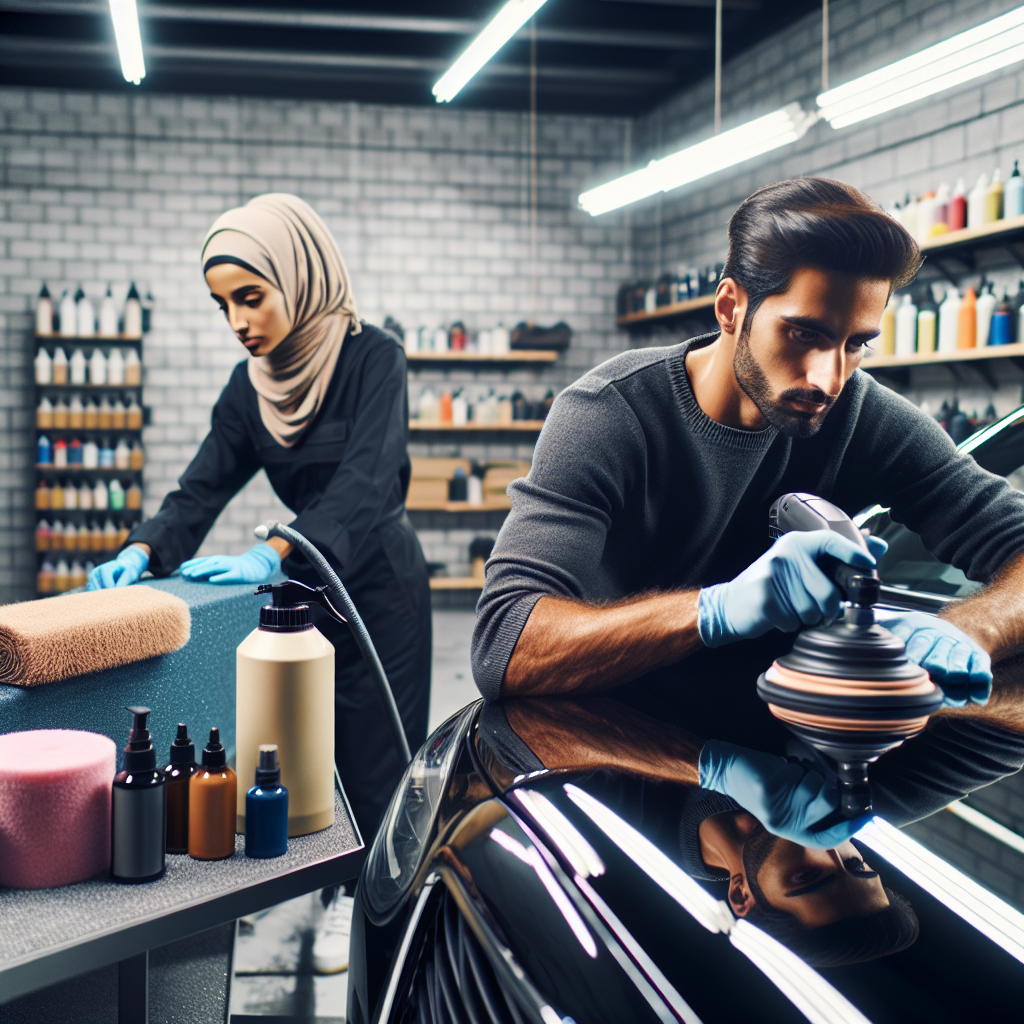Workplace Safety Measures
Identifying Hazards
When you step into an auto detailing shop, the last thing on your mind should be whether you’re safe or not. From my personal experience, the first step to ensuring a safe work environment is to identify potential hazards. Look around—edges of worktables, chemical storage, wet floors; they all pose risks. Make it a routine to evaluate your workspace regularly. This keeps everyone aware and minimizes accidents.
In the process of identifying hazards, it’s important to engage your team. I always encourage my crew to speak up if they notice something that could be dangerous. This not only helps pinpoint issues that I might miss, but it also fosters a sense of teamwork and shared responsibility for safety.
Finally, don’t forget to document everything. Keeping records of identified hazards and the steps taken to mitigate them will not only help in keeping the workplace safe but can also save your neck in case of liability issues down the road.
Proper Use of Personal Protective Equipment (PPE)
Once hazards are identified, the next logical step is to equip my team with the right personal protective equipment, or PPE as we like to call it. Whether it’s gloves, goggles, or masks, these items can make a world of difference. I remember one time a new employee scoffed at the idea of wearing gloves while detailing. After a few hours of handling chemicals without them, they quickly changed their tune.
It’s crucial to have designated storage areas for PPE so that it’s readily accessible. I set up a simple, organized space near the entrance of the shop and made it a part of our routine to check equipment before every shift. A little planning goes a long way in making sure everyone suits up.
Plus, regular training sessions on using PPE not only reinforces its importance but also equips the team with the knowledge they need to protect themselves effectively. It’s all about creating a habit that keeps safety in mind.
Emergency Preparedness
Accidents can happen, and that’s why having an emergency preparedness plan is essential. I can’t tell you how many times I’ve had to whip out our emergency protocol for everything from chemical spills to slips and falls. Having a clear plan and ensuring everyone knows how to act swiftly can really help in avoiding chaos.
I usually conduct emergency drills every few months. This keeps everyone sharp and prepared for any potential incident. We review our escape routes, where the first aid kits are located, and who to contact in emergencies. It’s a bit of a drill, but it creates a sense of confidence among the crew, knowing they can handle unexpected situations.
Additionally, having a well-stocked first aid kit is a must. I recommend revisiting it frequently to ensure supplies are not expired. Don’t skimp on items—having the right tools can make a significant difference when time is of the essence.
Efficient Workflow Design
Layout Considerations
Creating a productive work environment is largely about how the space is laid out. When I first started, I quickly discovered that haphazard arrangements could lead to chaos. By taking a step back and looking at how the workflow interacts, I was able to streamline tasks, which improved overall efficiency. One thing I always consider is how to minimize the amount of unnecessary movement—this can save time and keep everyone focused.
Making sure that everything from the cleaning stations to the drying areas are in a logical flow is key. I usually take our layout and adjust it based on regular feedback from my team. Sometimes they come up with solutions that I hadn’t even considered!
Also, don’t forget about signage. Clearly marked areas and instructions can reduce confusion and keep the workflow smooth. I’ve found that bright colors and clear language resonate best with everyone in the shop.
Effective Time Management Techniques
Let’s talk about time management—in a bustling detailing shop, every minute counts. I’ve learned that setting clear expectations and time frames for each task can dramatically improve productivity. Having a detailed checklist for each detailing job can help keep things on track and ensure that nothing gets overlooked.
If possible, I also recommend scheduling ‘focus time’ where the team can concentrate on fewer distractions. Music? Sure! Chatting while working? Only during breaks! Giving the crew time to zero in on their work not only boosts output but also improves the quality of the detailing service you provide.
Regularly reviewing how the team manages their time can guide future projects. If a specific task consistently runs over time, it might signal a need for additional training or support instead of a reprimand. Positive reinforcement goes a long way in building a productive atmosphere.
Feedback and Improvement Culture
Finally, I can’t stress enough how important it is to foster a culture of feedback and continuous improvement. It’s all too easy to stick to what you know and not seek out improvements, but taking a creative approach makes a difference. I encourage open discussions during weekly meetings where we can discuss what’s working and what’s not.
To make it more engaging, I often implement a ‘feedback box’ for everyone to submit their thoughts anonymously. You’d be surprised at the gem of ideas that come out of these submissions. It helps everyone feel heard and valued, which is crucial for team morale!
Lastly, don’t forget to celebrate successes—both big and small. Acknowledging achievements can motivate the team to strive for even better results. Everyone likes to know their hard work is appreciated!
Conclusion
Creating a safe and productive work environment in your auto detailing shop doesn’t happen overnight. It’s about being proactive, adaptable, and open to communication. By focusing on workplace safety, efficient workflow, and maintaining a culture of feedback, I’m confident any auto detailing shop can thrive.
FAQ
1. What are the key components of workplace safety in an auto detailing shop?
The key components include identifying hazards, proper use of personal protective equipment (PPE), and preparing for emergencies. Regular training and documentation are also essential to maintaining safety standards.
2. How can I improve workflow in my auto detailing shop?
Improving workflow involves careful layout considerations, effective time management techniques, and ensuring that everyone is on the same page regarding their tasks and responsibilities.
3. What role does feedback play in creating a productive environment?
Feedback fosters a culture of continuous improvement and makes employees feel valued. It encourages open communication, which is crucial for problem-solving and innovation.
4. Why is PPE important in an auto detailing shop?
PPE is essential for protecting your team from chemical exposure and physical hazards. It reduces the likelihood of accidents and ensures that employees can work safely and efficiently.
5. How often should emergency drills be conducted?
Emergency drills should ideally be conducted at least every 3 to 6 months. Regular drills keep everyone familiar with emergency procedures and ensure preparedness in case of an actual emergency.



